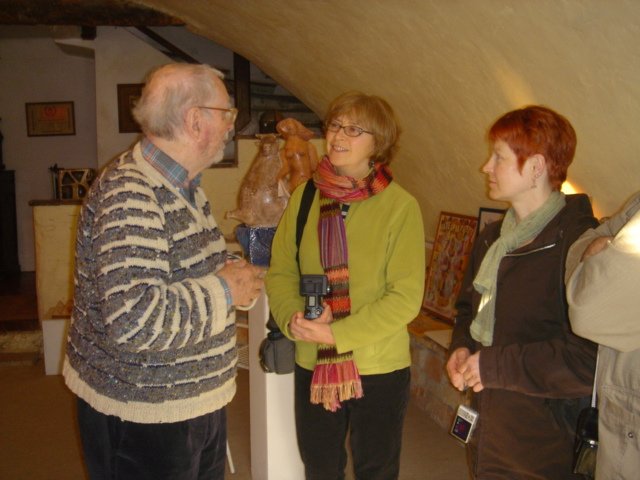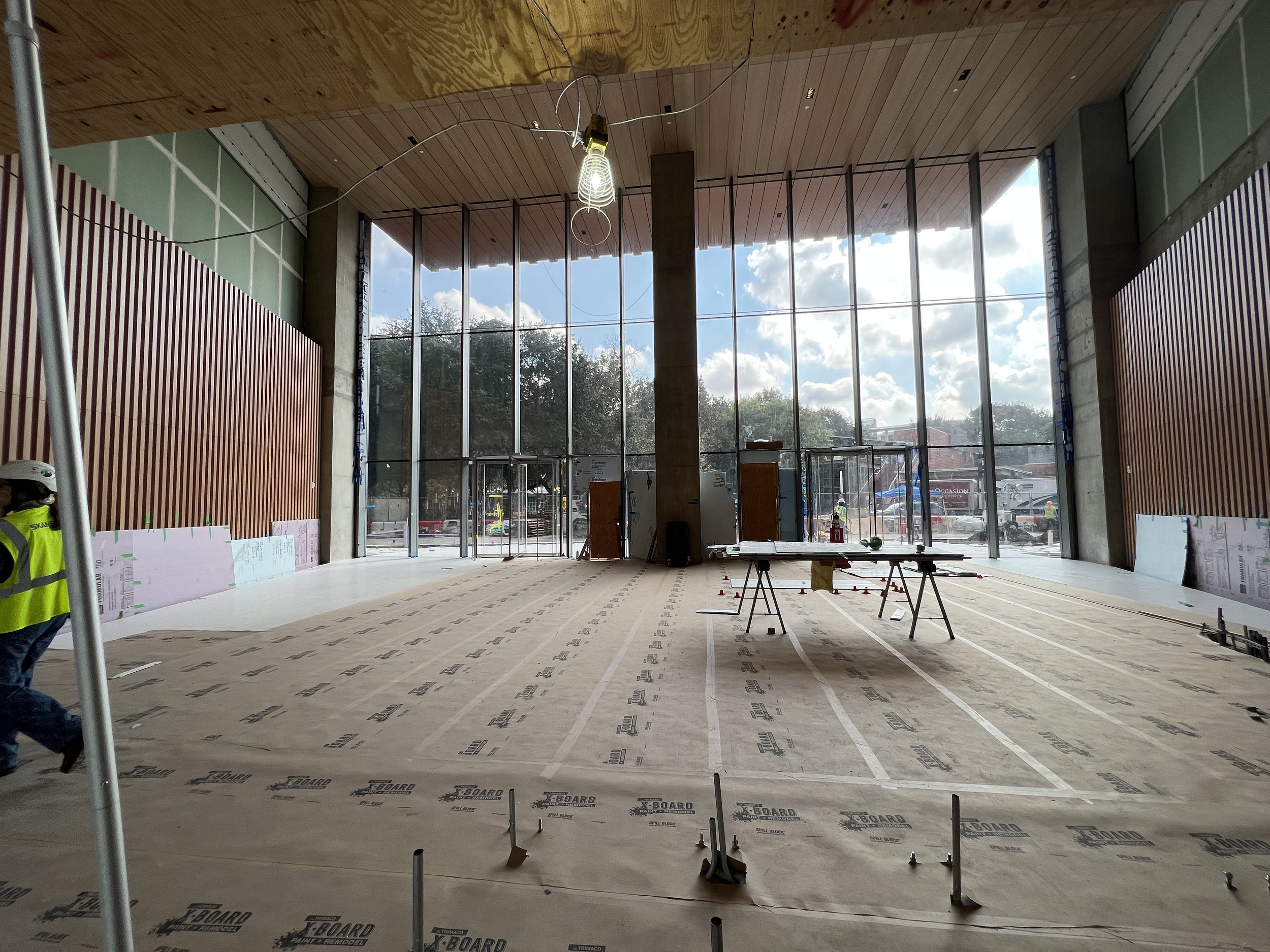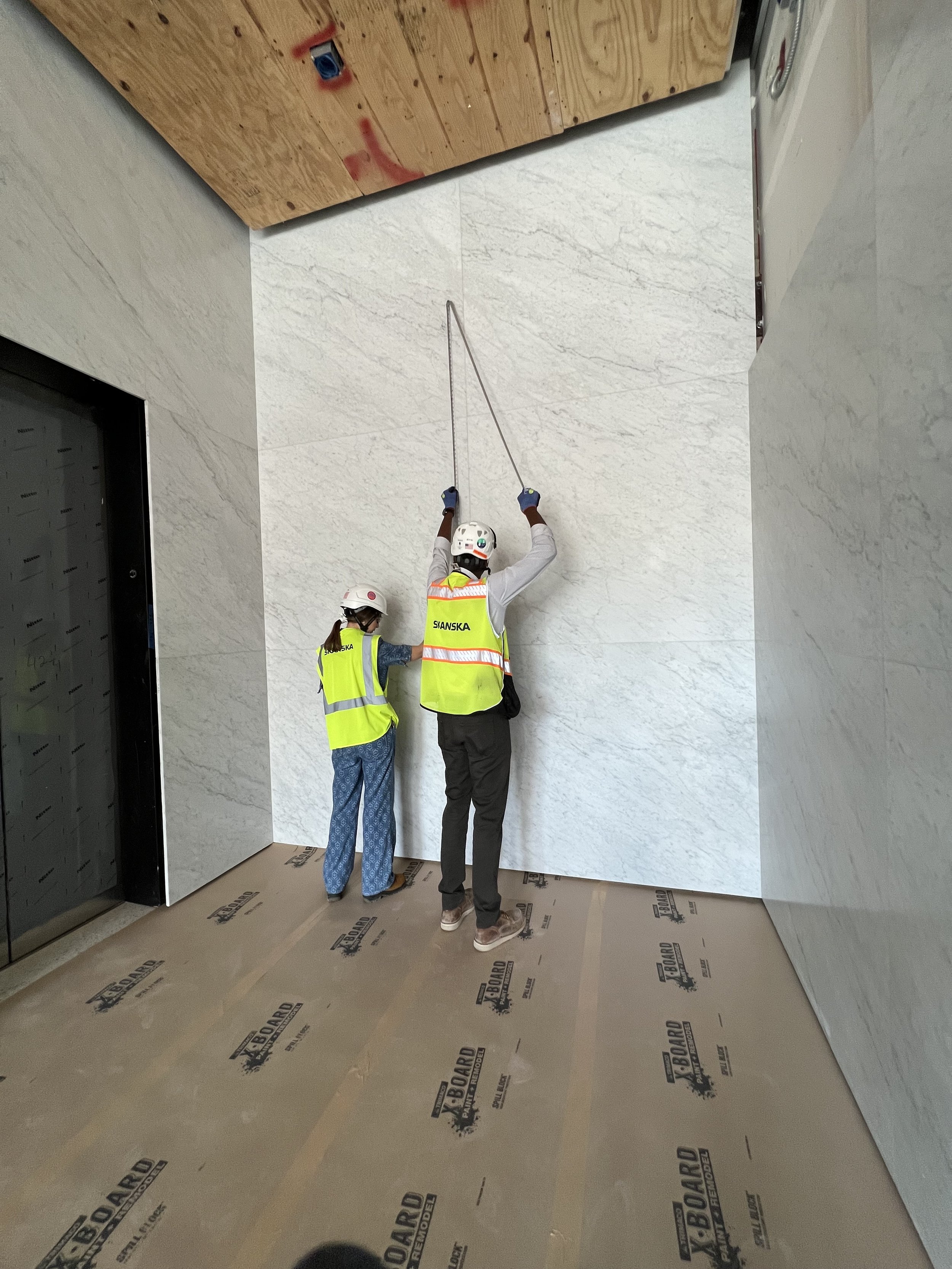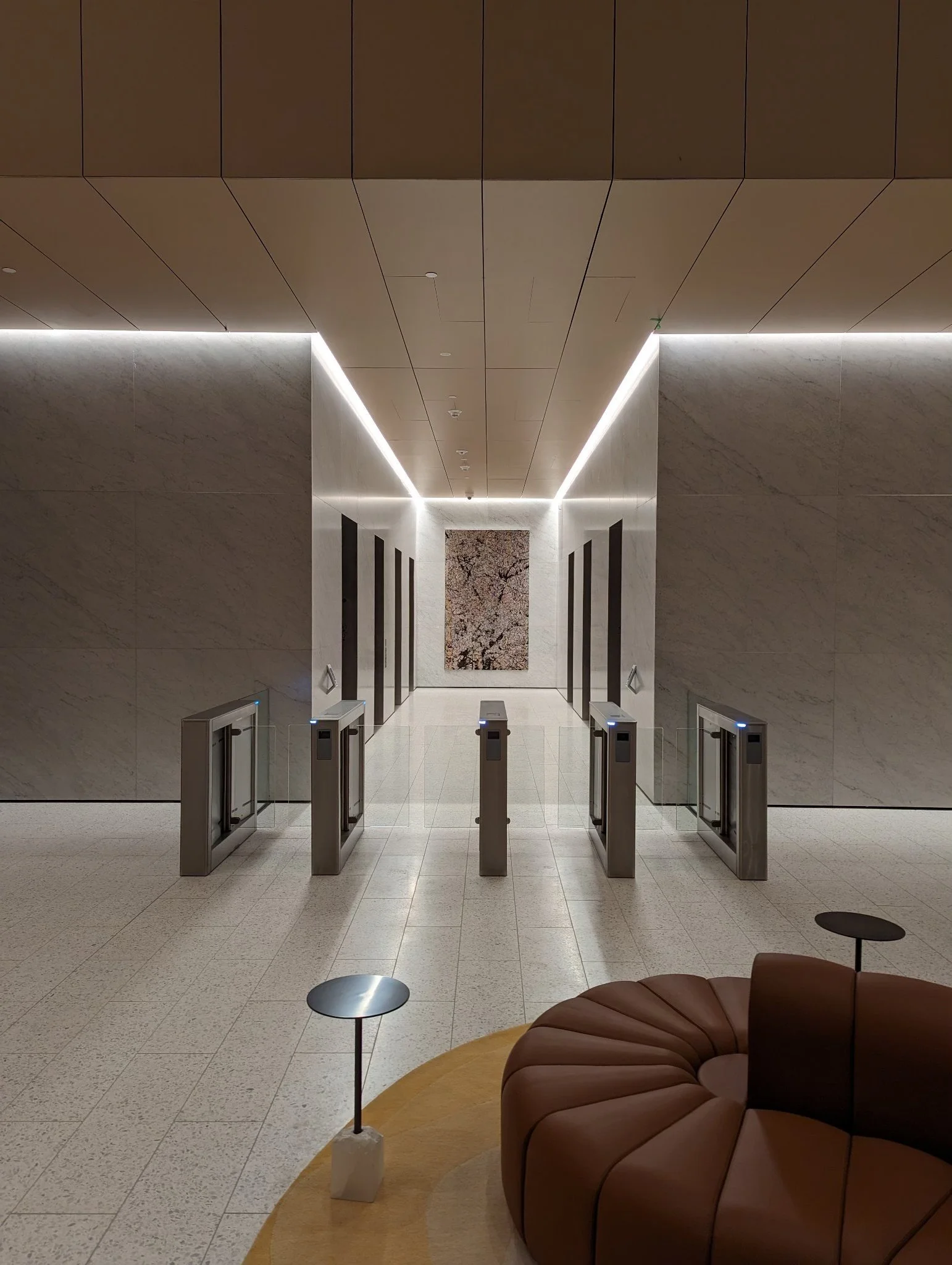GIVERNY SERIES AND BEYOND
THE EPIC JOURNEY OF CREATING THIS SERIES
. . .I got out of the car and was greeted by a resplendent blooming white almond tree.
It burst forth like a resounding triumph of life over death, the stubborn resilience of nature.

THE EVOLUTION OF THE ALMOND TREE SERIES
One of the questions I am frequently asked is how long it takes me to do a painting.
I don’t know what the person really wants to know. Do they want to know how many hours it took me to apply the paint? Or do they want to know how long the piece took from initial concept to completion?
Do they really want to know how long it takes, everything that goes into making a painting, or how one painting builds on the last, or how each iteration of a painting is exploring some new aspect of the original concept?
Recently, I was asked to do an Almond Tree painting for a large building complex. The motif for this painting originated 15 years ago. I have decided to trace all the steps that led to this current painting. It’s a shaggy dog story to be sure, so pack your bags, it’s going to be an adventure.
-
It often begins with an event, or a series of events that coalesce into combinations of color and brush strokes that evolve after many iterations. This is the full creation story of one of those paintings.
In 2008 I was an artist-in-residence at A.I.R. Vallauris, a town in southern France up the hill from Golfe-Juan on French Riviera, between Antibes and Cannes. It is filled with working class Frenchmen, many ceramic artists (this is where Picasso worked when he made ceramics at Madura), and a large immigrant community.
It is here that my adventure with the Almond Tree Series began.
I lived in a small, narrow house with three other artists. The first floor was a gallery, originally owned by the French artist Ben; the second floor had a one-room living-dining-kitchen area, the third and fourth floors had two bedrooms and a bath each.
I shared the third floor with Julien, a French-Canadian ceramicist. Ulla from Finland and Janet from England via the States shared the fourth floor.
Julien organized our household in a way that worked for us. We ate communally, threw our laundry in together, played cards every night.
On the way to the studio, we would pass Picasso’s bronze statue of a goat in the town square, a reminder of a great artist’s presence in an area where we were exploring our own creative visions.
Sometimes Julien accompanied me on my walk to the studio. He was French-Canadian and, out of all the artists, he and I spoke the most French together. But Julien spoke the most, period. The man loved to talk.
Julien was our cultural ambassador, helping us navigate everything from the laundromat to the post office. With some languages, like German, you can slaughter your pronunciation and still be understood. Not so with French. The locals found Julien’s French-Canadian accent incomprehensible, and they often looked to me for a translation.
Since A.I.R. Vallauris is mostly a ceramic residency, I thought I should try my hand at ceramics. I collaborated with Julien on some pieces. He threw vases in porcelain that he covered in a black slip. I then carved into the slip using imagery from Japanese prints that had influenced the Impressionists.
At a communal raku session, Julien helped make cups for each of us to play around with glazing and firing, using ash from the fire and some copper and other things to manipulate the surface. The cups were fired in a metal barrel with a wood fire.
When the pieces were removed from the fire one of mine burst apart. I felt it acutely. It seemed like more than just the inevitable fragile nature of ceramics. It felt like an omen.
As the two-month residency came to a close and we began preparations for our end-of-residency exhibition, I noticed Julien was not his usual self. There was a lot of running up and down the hill to bring the work from the studio to the gallery and he seemed particularly worn out by this. After the opening, I asked if he was depressed about the residency being over – or if he had just the usual post-exhibition blues. He insisted that he was fine, just a little tired.
After the exhibition, Dana Sardet, an American filmmaker living in France, came to visit us and show us her film on Matisse’s Chapel. She was also working on a film about a ceramic manufacturer in Biot. She wanted to take us to see their process, but there was only enough room in her car for three of us. I volunteered not to go, as I knew I would be back and have another chance to see the factory.
The day before the trip to the factory Julien, Ulla and Jan set out for a day of sight-seeing in Nice. They ran down the hill to the train station in Golfe-Juan, and Julien, with one foot in the air, collapsed on the platform. Ulla ran to him, and Jan ran to the ticket window to plead for someone to call an ambulance. Julien had had a heart attack.
An ambulance came and they tried to revive him on the spot, then drove him to the hospital in Cannes. As soon as I heard I left immediately for the hospital.
Julien was in the ICU. We were given a chance to visit. When we went in, Janet and Ulla knew what I did not; he was brain dead. He was being kept alive for his next of kin to see him.
The following day, Dana showed up as planned. There was nothing we could do for Julien, and still shaken from the events of the day before, we decided that this distraction was welcome. Now, for the saddest reason, there was room for me in the car. As we parked the car in a small municipal parking lot on the edge of town, I got out of the car and was greeted by a resplendent blooming white almond tree. It burst forth like a resounding triumph of life over death, the stubborn resilience of nature. I took a picture.
That afternoon, we toured the ceramic factory. I observed it with the heightened attention that seems only to accompany us when we are desperately avoiding something.
The next day I left for Berlin. That night I called Dale, the director of the residency. Julien was dead.
I don’t know why Julien’s death affected me so strongly. Was it because I made his last meal, and it was leftovers? Was it because the four of us lived and worked so closely together for seven weeks? Or was it that this relationship had a beginning, a middle and an end? For whatever reason, we went through this together.
It was also a microcosm of a larger arc in my life. In the following six months, I lost seven people I was close to, some tragically, some through the nature of things, two within 24 hours. It was a time when the question, “How are you?” was much too personal. Julien became the symbol of all of those losses.
When I returned home to my studio, I felt the need to paint my way out of my grief. As I looked through my photographs the one of the almond tree stood out. And thus began my deep work with this subject.
I painted each blossom at first as though they were stones on a grave, each one provoking a memory of someone I had lost. But soon those blossoms were like the folded origami cranes that have come to symbolize healing.*
Each blossom brought me more peace and more hope.
When I finished the painting, I sat on a crate and looked at it. One of the painted branches seemed to lift off the canvas and spring into the room. It was as though the painting was imbued with life, like Lazarus, back from the dead. From that moment on, the painting, for me, became a symbol of life, hope and healing.
That was the first of many iterations of this image, first in paint, then in lithographs, then digital prints, and then back into paint. Each time my investigation was different. (I chronicle these projects in the blog posts below. They are written in real time without any knowledge of where this work would take me. Each effort informed the next.)
So when people ask me how long it takes me to do a painting, do they really want to know all these paths and dead ends that I took, or the experiences, trips or deaths that were involved? If I were to answer honestly, this Almond Tree painting** took me 15 years to develop and many months to execute. Or as Picasso would say, “It takes a lifetime.”
*[In Japanese folklore, it’s alleged that a person can be granted one wish if they fold 1,000 origami cranes (this practice is called senbazuru in Japanese). The paper bird later became a symbol of hope and healing during challenging times, and the folding of 1,000 paper cranes was popularized with the story of a young girl named Sadako Sasaki. When Sadako Sasaki was two years old, she was exposed to radiation from the atomic bomb that devastated Hiroshima in 1945. By the time she was 12, the radiation exposure had developed into leukemia, and she was given just one year to live. The young girl began making 1,000 paper cranes in the hopes of being granted her wish to recover from her illness. However, as time went on and her collection of origami cranes grew, her goal changed. Sasaki decided to wish for world peace instead of her own life. As her condition worsened, she never stopped making paper cranes and her classmates even joined in to help her. After she passed away, she was buried with a wreath of 1,000 paper cranes, and she became a symbol of peace and love. Sasaki is now forever memorialized at Hiroshima Peace Park, where a statue of her holding a giant crane—called the Children’s Peace Monument—stands. [My Modern Met]
** The Almond Tree painting is installed in an office building built by Skanska in Houston, Texas.
A SELECTION OF ALMOND PAINTINGS
BLOG POSTS ABOUT THE ALMOND TREE SERIES AND ALL OF ITS ITERATIONS
THE PRINT PROJECT
IT'S DECIDED
WORKING WITH A MASTER PRINTER
WORKING WITH A MASTER - Part 2
IF AT FIRST . . .
CREATING FOUR COLOR LITHOGRAPH PLATES
A NEW TWIST
THE PRINT PROJECT AND IT’S AFTERMATH
ABSTRACT OR REPRESENTATIONAL
MID-YEAR, MID-AIR, MID-WHERE?
18TH CENTURY JAPANESE SCREEN
RESEARCH - JOSEPH RAFFAEL AND BONNARD PRINTS
STUDIO NOTES
Picasso at Madura, the studio that collaborated with him on his ceramics. All of the ceramic artists and Madura were within walking distance from AIR Vallauris.
Roger Collet was one of the ceramicists in Vallauris who worked with Picasso and went on to have an important career of his own.
Derval another important ceramic artist in Vallauris. He showed us some photographed of the costumes they made with Picasso for parades in town.
Julien Couture is the artist who died during the residency at AIR Vallauris. This series is in honor of him.
This is the pottery factory we visited in Biot. They made large vessels using an armature wrapped in rope. The Potterie was destroyed in a flood. Biot's famous earthenware jarres have been a tradition in this tiny coastal town since the 14th century. Ravaged by wars the town and it's pottery tradition were rebuit in 1470 when 16 families from Genoa, Italy restored the war torn village. The king at this time, Roi Rene, awarded special privilages to these 16 families for reconstructing the town and reintroducing the pottery tradition that had been destroyed. The poterie provencale has never varied from tradition. It began making the terra-cotta jarres with oval bodies and narrow cylindrical necks to hold olive oil for storage or shipment around the Mediterranean. In the early 1900s the jarres which were used for olives and oils for storage became popular in the gardens. The Mediterranean tradition "jarres pour le jardin" has since become popular throughout the world. Today the tradition continues - Daniel, Rene, and Oliver are descendants of the founders. Click on image ABOVE for a VIDEO I made of the process.
This is the tree I saw in the parking lot in the French town of Biot that started this whole journey.
My prints were inspired by Monet's "Rouen Cathedral" which depicted the facade of the building at different times of day.
Here are slices of the Morning, MidDay, Evening and Night almond tree prints. While these are the versions we settled on, I did not run an edition. I was too curious about the ways in which I could change to colors for different effects. In the end I was not even content with that and I painted on the prints, so that ultimately I think we made 25 completely different iterations of this image.
Tim Sheesley at Corridor Press was my complete partner and guide through making my almond tree lithographs.
This is a layout of the plate proofs and all the permutations we went through.
"Almond Tree-Deep Fall". I painted on this lithograph with gouache as I sought more and more ways to play with the image.
After making the lithographs, I made digital versions of the lithograph.
This one after Van Gogh.
Then I made digital versions incorporating the palette of different paintings by other artists, in this case Bonnard.
"Träd Towers will be overflowing with charismatic energy that draws people in, makes them curious and excites them to learn more. Magnetic energy reaches out and welcomes visitors in, just as the flow between the park and ground floor will pull people towards the building." Träd is Swedish for tree. This is the building that I am making the new Almond Tree painting for.
This is the view from where my painting will hang to the outside of the building being built by Skanska.
Measuring the space for my painting.
The setting for the painting at the 1550 Building in Houston.
Commission installed in Houston













































